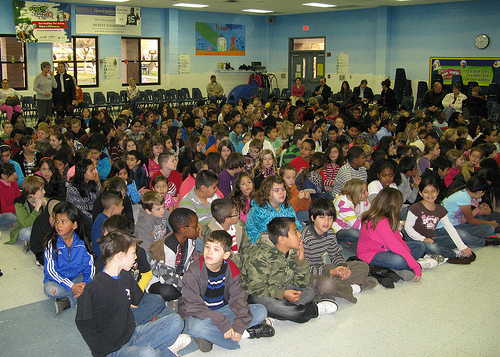Tough times and dire circumstances have a longstanding history of bringing America’s communities and organizations together. The recent storms that descended on much of the nation’s Mid-Atlantic and Northeast regions have underscored these important partnerships.
For many of the stricken areas, including the urban centers in the Northeast, natural disasters of this scale are relatively rare. And households containing the very young, elderly and those with special needs are of particular concern to USDA and our many partners engaged in these emergencies.
To aid those in Hurricane Sandy’s crosshairs, USDA swiftly coordinated with FEMA, States, and partner organizations to provide disaster nutrition assistance in 13 states. By issuing automatic, mass replacement of SNAP benefits to certain households hit by the storm – for instance – SNAP individuals and families currently participating in SNAP will be able to replace their food purchased with SNAP benefits that spoiled due to flooding and power outages. In the severely affected areas of New Jersey and New York SNAP recipients will be granted a waiver to purchase hot foods with their benefits. In addition, USDA has worked with retailer trade associations to ensure SNAP authorized stores are aware of this waiver and eligibility for the purchase of hot foods through the month of November. Meanwhile, several other States have been granted extensions to report loss of food purchased with their SNAP benefits and to request replacement benefits. Read more »
USDA’s Food and Nutrition Service (FNS) recently released its 2009-10 School Food Purchase Study, which provides national estimates of the quantity, value and unit price of food acquisitions by school districts participating in the National School Lunch and School Breakfast programs. This year, the Survey for the first time asked specifically if school districts were purchasing local food and included questions about the total value of purchases and the major items purchased.
School district responses provide an important baseline for tracking the national progress of local food purchases by school food service programs. The responses showed that about 2 out of every 10 school districts surveyed purchased local produce for school meals during the 2009-10 school year, based on responses from a nationally representative sample of 416 school district food service directors about practices for purchasing food for school meal programs. An additional 12 percent indicated that they are in the process of developing a program for buying locally grown produce. Read more »

Children listen attentively to the award ceremony.
Did you know that Georgetown is the Red Poppy Capital of Texas? I was surprised to find out that the city is known for the red poppy wildflowers that bloom throughout the city each spring. They hold the Red Poppy Festival each year in April and attract approximately 30,000 visitors. Read more »
Tags: Childhood Obesity, CNR, FNS, HealthierUS School Challenge, Let's Move, Michelle Obama, National School Lunch Program, School Breakfast Program, Texas, Texas Department of Agriculture
 Food and Nutrition, Let's Move
Food and Nutrition, Let's Move
In the past 24 hours, we’ve seen a lot of chatter online regarding a story from North Carolina in which a pre-school student’s lunch was deemed “unhealthy.” We’d like to set the record straight.
As established by law, USDA promotes healthier lifestyles for our nation’s school children through the National School Lunch and Breakfast Program. The Department sets science-based nutritional standards for and oversees State administration of schools that choose to participate in these national programs. In exchange for meeting those standards, USDA provides reimbursement and other resources to schools so that children get the nutrition they need to learn, thrive and grow.
USDA does not, however, regulate sack lunches or any other food children bring from home to eat at school. That is a responsibility for parents, not the federal government. The incident in North Carolina involved local education officials and a State-run nutrition program, and USDA had no involvement.
Like a broken street light, childhood hunger impacts the well-being of the community and will only be fixed when the local community recognizes it, takes an interest, and decides to address it. When those who care come together, pool their talents, and take advantage of available resources, things start to happen. Things get fixed.
The city of Dallas is getting serious about ending childhood hunger. Just a month after the October kick-off of the No Kid Hungry Texas campaign, local leaders came together for a hunger summit in Dallas in November. The diverse line-up of speakers was inspiring! There were leaders from Congress, all levels of government, faith-based organizations, food banks, non-profit organizations and schools. Every speaker was passionate and convincing about the need and ability to end childhood hunger. Read more »
Tags: Bill Ludwig, Dallas, FNS, National School Lunch Program, No Kid Hungry, School Breakfast Program, SNAP, Summer Food Service Program, Texas, Texas Hunger Initiative, WIC
 Food and Nutrition
Food and Nutrition

Two elementary school students enjoy a safe and nutritious meal through USDA’s National School Lunch Program.
We often talk about how important it is for different groups including schools, nonprofits, corporations, faith communities, and others to work together end childhood hunger. Many times children and youth are left off that list, but not today! This is your chance to get involved. We’re calling on all students, grades 1-12, to answer the question: How can you help to end childhood hunger in your community? Read more »


